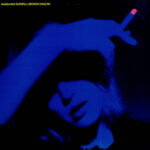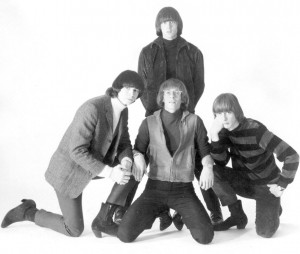-
Featured News
Marianne Faithfull 1946-2025
 By Harvey Kubernik
Singer, songwriter, actress and author Marianne Faithfull passed away on January 30, 2025.
In 2000 I discussed Faithfull with her first record producer Andrew Loog Oldham, the 1
By Harvey Kubernik
Singer, songwriter, actress and author Marianne Faithfull passed away on January 30, 2025.
In 2000 I discussed Faithfull with her first record producer Andrew Loog Oldham, the 1 -
Featured Articles
The Beatles: Their Hollywood and Los Angeles Connection
 By Harvey Kubernik
JUST RELEASED are two new installments of the Beatles’ recorded history, revised editions of two compilation albums often seen as the definitive introduction to their work.
Or
By Harvey Kubernik
JUST RELEASED are two new installments of the Beatles’ recorded history, revised editions of two compilation albums often seen as the definitive introduction to their work.
Or -
The Making of Think Pink

An Interview with John “Twink” Alder by Augustus Payne
Could you tell me about the events leading up to the recording of the Think Pink. It was nearing the end of your tenure with the Pretty Things, correct?
I was playing drums for the Pretty Things and at that time, early to mid ’69, I and other members of the Pretties, had been hanging out with Steve Peregrin Took and members of the Deviants. We had performed a number of shows together and would often go out partying afterwards. I became very interested in the Deviants community spirit and began to attend their recording sessions (the last album) and photo sessions, etc.
In June ‘69 Mick Farren invited me to meet Seymour Stein and Richard Gottehrer of Sire Records, a US record label who had released the Tomorrow album in the States (the band I was in before the Pretties). We met and a deal was struck there and then for album from Twink with Mick Farren as producer. The album was recorded in July 1969 and at the end of the month my last show with the Pretty Things was at the Isle of Wight Festival (Bob Dylan also played). There was still some work to be done on Think Pink, i.e. mixing, which was done with Steve Peregrin Took and Richard Gottehrer in attendance, after I returned from a two-week holiday in Portugal in August or September.
The Sons of Adam: Saturday’s sons of the Sunset Strip

By Greg Prevost & Mike Stax
From late ’65 until early ’67, the Sons of Adam were one of the most happening bands on the Sunset Strip, playing to packed houses at clubs like Gazzarri’s, Bito Lido’s and the Whisky A Go Go. They had the right sound, the right image, and some of the most talented musicians on the scene. They even had their share of lucky breaks, including an appearance in a major Hollywood movie and a deal with Decca Records. Arthur Lee even gave them one of his songs. Yet somehow the Sons of Adam never managed to lift themselves out of the Hollywood club scene and into the major leagues. Today they’re mostly remembered as the band Michael Stuart was in before he joined Love, or the band Randy Holden was in before joining Blue Cheer. What’s too often overlooked is that the Sons have a proud legacy of their own: three enormously great 45 releases, and a story that is long overdue to be told.
Warsaw Pakt: Rocket-fueled rock’n’roll from the bunker

Real high-energy rock’n’roll in its most potent form is best captured live and in the moment. Maximum thrills, minimum frills.
In 1977, London’s Warsaw Pakt took that premise one step further, recording their album live, straight through, direct to the cutting lathe – no tape master, no overdubs, no mixing. The record was pressed, packed and shipped overnight and was in the record stores the following day. No procrastination. Instant gratification.
“The idea was to bypass tape and gain a very accurate recording that would be louder and clearer than any other method then available,” remembers guitarist Andy Colquhoun.
The actual process was simple. “It was play Side One, break, tune up, play Side Two,” he explains. “This was done three times. The engineers were very concerned about us destroying the cutting lathe heads, which ran about five grand each. At first the sound in their control room at the top of the building was very restrained. By the third take of the two sides it was OK, but not as good as the room sound. They used that take anyway. The master was taken directly to the factory and manufactured overnight, and we were in Virgin Records at Marble Arch the following afternoon signing copies.”